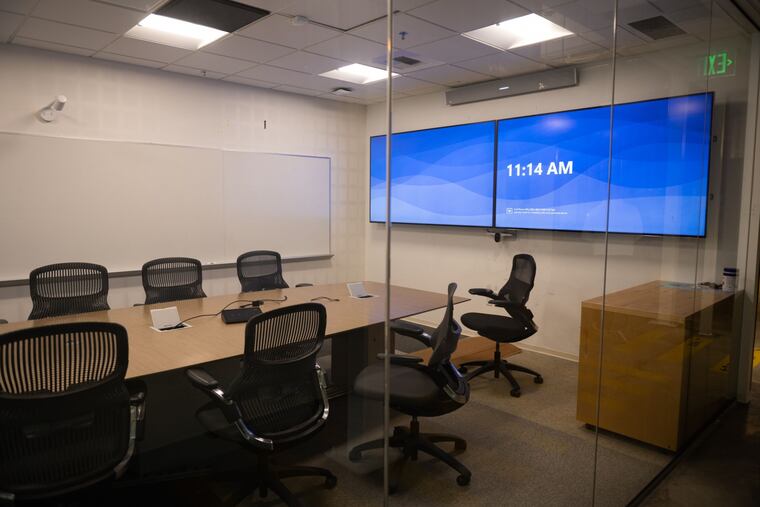Remote workers of the world, unite
Why quietly quit the Great Resignation when you can unretire and work forever?

There is an old GIF where a baboon whips a computer off a desk in what looks like a mix of contempt and disgust.
I thought of it when a friend forwarded a story about “un-retirement,” a term used to describe older workers happily rejoining the workforce to “embrace a new career.”
If I wasn’t on my work computer, I might have considered going full baboon, because just how many more terms are we going to invent to sanitize our wrecked workforce? (And that includes all the tales about older workers grinding well into their golden years, but framed as feel-good stories.)
Remember quiet quitting? It was broadly defined as employees putting in the minimum amount of effort to keep their jobs. More accurately, it was workers who had been turned into hollowed-out husks by unhealthy work environments finally setting some boundaries. How about the Great Resignation, which sounded revolutionary but was really the much-delayed realization that too many of us were being worked into early graves? (Oh, don’t mind Marge, she just quietly quit breathing ...)
Burned out, beaten down, depressed, and demoralized were all better characterizations (and sometimes used). But none of those words quite have the playful tone of these happy capitalist euphemisms, do they?
And now, instead of really addressing how people who reenter or never leave the workforce can’t afford to retire, we’re softening a very hard reality that a lot of American workers are drowning in despair.
Although the terms are not the real sin here, are they? They, in fact, point to ongoing issues even after the supposed workplace revolution that’s quickly turning into the workplace submission.
Comrades, we caught a glimpse of the sun, and now we’re being walked back into the shadows and told it’s for the best.
There was this moment during the earlier days of the pandemic when essential workers who literally kept the world going finally had an upper hand, when office workers realized that the very same technology that keeps us on a tight leash also made ice-cold offices (usually set to the metabolic rates of men, of course!) and soul-crushing commutes unnecessary.
But then employers found themselves sitting in empty offices in cities full of empty buildings, and now it’s back to wanting business as usual. To borrow the headline from a recent Wall Street Journal story: It is not our responsibility to save the office economy!
There is definitely an increasing push and pull between employers and employees, Kathy Kacher, founder of Career/Life Alliance Services, said when we talked this week. Just this past summer, some Amazon workers staged a walkout to protest the company’s back-to-work office policies, and Farmers Insurance employees threatened to unionize or quit when the company’s CEO walked back its remote work policy.
Workers are losing some ground, too, warned Kacher, a workforce transformation expert, with just as many local and national examples of employees being forced to adhere to increasingly rigid policies on returning to the office.
Never mind that data continue to point to remote work being productive and that studies show that a majority of people of color prefer hybrid work to better manage those micro- and macroaggressions. (And yes, I know there are just as many studies claiming the wondrous benefits of sitting in a sterile office 40 hours a week, but convince me those aren’t planted by Big Management.)
A Microsoft study, which tracked more than 60,000 employees over the first half of 2020, found that remote work increased weekly hours by 10%. A Stanford University study found that remote workers were 5% more productive than in-office workers in the summer of 2020. Productivity increased by 9% by the summer of 2022 as companies leaned into remote work with remote-friendly cultures and technology. Study after study shows that flexibility yields the most productivity, with some experts finding that employees spending about 25% of their work time with other colleagues is the most productive hybrid model.
And can we please just temper the whole in-person collaboration and connection rah-rah argument when, even in the office, most of our communication is still done electronically while we all stare into our individual screens? Water cooler banter isn’t a business strategy.
I’ve been lucky in my career to mostly work from wherever I am: My job is on the streets, in neighborhoods, almost anywhere but an office. I’ve filed stories from my home, my car, and various neighborhood street curbs. And while I understand it’s a privilege, and not replicable in many other fields, the last few years should have shown us that workers everywhere deserve equal access to their own versions of workplace flexibility.
There is at least one fad on the horizon I can get behind — if not necessarily its sanitized term.
As we talked about how employees could keep from losing more ground, Kacher dreamed up another term: quiet noncompliance, which I take to mean adhering to workplace policies no more than necessary to do your job and do it well, while never again losing sight that productivity and quality of life should not be mutually exclusive.
I’m hoping it catches on. Until then, solidarity forever, my fellow workers.